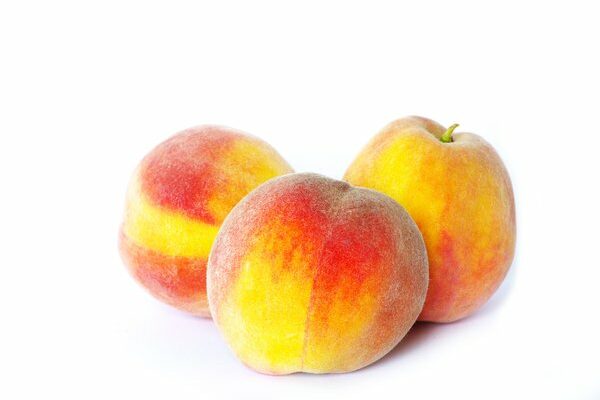Yellow peaches are a juicy and flavorful fruit that epitomizes the sweetness of summer. Whether you’re picking out yellow peaches for snacking, baking, or preserving, this guide will help you choose the best ones.
- Skin Color: Look for yellow peaches with a vibrant, golden-yellow skin. Avoid ones that are too green, as they may not have reached their optimal level of ripeness. A hint of red or blush on the skin is a good sign that the peach is flavorful.
- Texture: A ripe yellow peach should yield slightly to gentle pressure when you press it with your fingers. It should not be too hard or overly soft. If it’s too firm, it may need a little time to ripen. If it’s too soft, it might be overripe and mushy.
- Aroma: Bring the peach close to your nose and take a whiff near the stem end. A ripe yellow peach should have a fragrant and sweet aroma. If it doesn’t have much scent, it might not be fully ripe.
- Shape and Size: Choose yellow peaches that are plump and well-rounded. They should have a uniform shape without any noticeable indentations or irregularities. Size can vary, but larger peaches tend to have more flesh to enjoy.
- Stem and Bruises: Check the stem area of the peach. If it’s still attached to a small part of the branch, it indicates that the peach was harvested at the right time. Avoid peaches with a dried or shriveled stem. Also, steer clear of peaches with bruises, cuts, or soft spots, as these can indicate damage or decay.
- Seasonality: Yellow peaches are at their peak of sweetness and juiciness during the summer months, typically from late spring through early fall. Their availability may vary depending on your location and the local growing season.
- Ripening: If you find yellow peaches that are slightly underripe, you can allow them to ripen at room temperature. Placing them in a paper bag can expedite the ripening process. Adding a ripe banana or apple to the bag can also help release ethylene gas, which speeds up ripening.
- Storage: Ripe yellow peaches should be stored in the refrigerator to maintain their freshness. They’ll keep well for a few days. However, if you have unripe peaches, it’s best to store them at room temperature until they’re ready to eat.
- Culinary Uses: Yellow peaches are incredibly versatile and can be enjoyed in various ways:
-Fresh: Wash the peach, slice it open, remove the pit, and enjoy the juicy flesh. They’re a great snack on their own or in fruit salads.
-Cooking: Yellow peaches are fantastic for baking into pies, tarts, crisps, and cobblers. They can also be grilled or roasted to bring out their natural sweetness. - Nutritional Benefits: Yellow peaches are not only delicious but also nutritious. They are a good source of vitamins A and C, dietary fiber, and antioxidants, contributing to overall health and well-being.
In conclusion, selecting ripe and delicious yellow peaches involves considering factors such as skin color, texture, aroma, shape, and overall quality. Remember to enjoy these seasonal delights while they’re at their freshest, whether you’re biting into them straight from the tree or incorporating them into your favorite recipes.
